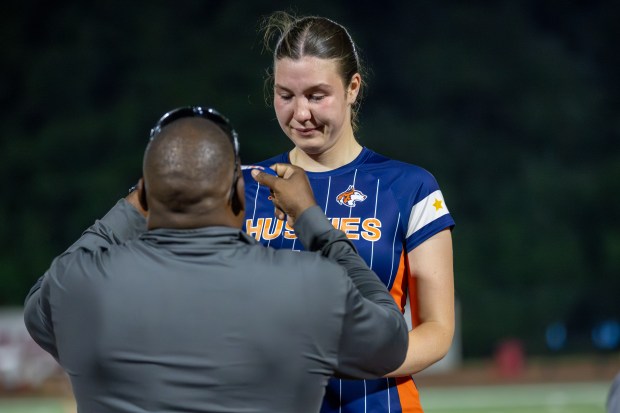Not all hunter-gatherers are on the lookout for bears or birds; some seek mushrooms.
Spring brings the arrival of morels, the spongy looking fungi that mostly grow beside dead elm trees. Much like truffles, you have to forage to find them and chefs use them to enhance their dishes at significant cost to the consumer. You can spend upwards of $15 for just one ounce of the dried version online.
Morel hunter Randy Ems isn’t interested in selling them. He loves their distinctive taste, not to mention the competitiveness of finding a good crop. He’s been prowling for them for 60 years, starting as a 4-year-old alongside his dad, a parks and recreation director in Canton.
“It’s hiking with a purpose. How successful you are depends on how much time you put in in the woods,” said Ems, a Naperville business owner since 1990.
“They have a very distinctive look. They look like a sponge. … You can put them in stroganoff or pasta, but I think they’re best with chicken fried steak. You slice them in half and soak them in egg batter before dipping them in cracker crumbs. If you fry them in butter, they taste phenomenal. It’s an earthy taste.”
Ems even holds mushroom parties at his home in Yorkville. In a good year, he might take home as much as 40 pounds.
He was happy to share a few hunting tips but warns that you can’t go on private land without permission. He’s fortunate that his family owns farmland in Knoxville, where his wife Amy grew up.
Hunting season there begins in the last week of April, first week of May.
“I start in Carbondale and hunt through the Shawnee National Forest,” Ems said. “I’ve been lost there more than once, one time for more than two hours in a storm. The mushrooms start growing south and move north.”
Ems recalls how he once found seven pounds of morels under one tree, which is pretty unusual.
“You can find five to 15 pounds with the right tree,” he said. “I once found 40 pounds of morels with my dad; about 40 mushrooms per pound.”
Like any hunter, morel gatherers need the right clothes and the right equipment, which should include a walking stick.
“I wear boots going up and down hills because you don’t want to slip,” Ems said. “You need a stick for stability and to poke the leaves under the elm trees to look for morels.”
Something to watch out for is rosa multiflora, an invasive rose with sharp thorns that can take over the woods, which is why a long-sleeved shirt and jeans help.
Once you find a mushroom, you twist the base to remove it. “I don’t pull them because I don’t want to disturb the spores on the roots that help them spread in future years,” he said.
Morel hunters are competitive people. They never share their sources and are secretive about the best places to look. Most states have some species of morels and Ems forages not only in Illinois but Wisconsin and Michigan too.
Ems says he’s famous in Knox County, where you can find as many as 1,000 mushrooms every year.
“I run with a sack so no one sees me,” he said. “The person who gets there first wins.”
The weather can play a big role in how many you can find in a given year.
“Ideally, they need a lot of rain, which we haven’t had this year,” Ems said. “They do better in gradual coolness. … If we have three days of 80 degrees or higher and they won’t come out for the year. You may not get any, as fungus likes cool and damp weather, not hot. You develop an eye for finding them in the distance by the shape and color.”
The prime season is short, only about two weeks. Ems will spend 20 hours a week on the hunt, up to eight hours at a time. He loves the thrill of the search and competitive nature of it all, he said.
“If I (see) someone hunting, I walk the other way,” he said. “You don’t give away your secrets.”
Hilary Decent is a freelance journalist who moved to Naperville from England in 2007. She can be reached at hilarydecent@gmail.com.





